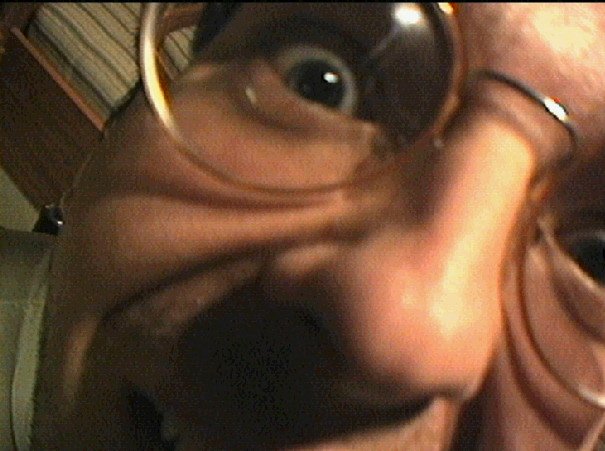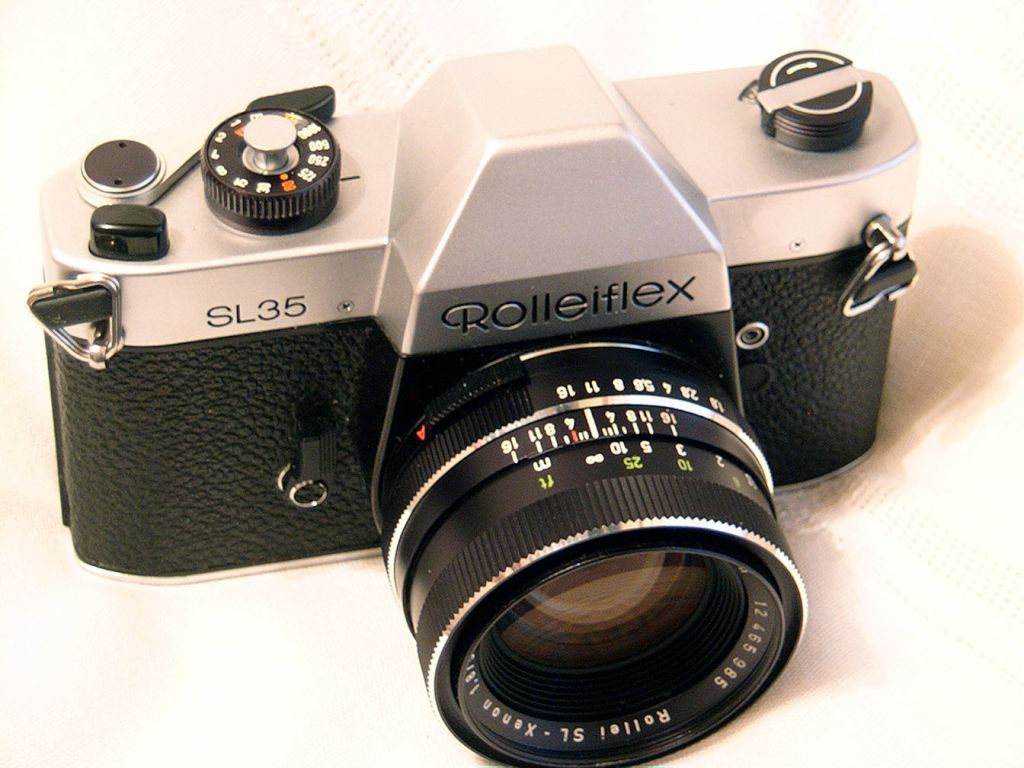 Back to GanjaTron's site
Back to GanjaTron's siteRolleiflex SL-35

Rolleiflex SL-35 with Zeiss Planar f/1.8 50mm [click to enlarge]
The SL-35 is my standard 35mm camera. The majority of the pix in the 35mm gallery were shot with this camera. I got to know the photography basics with it, since it's totally devoid of frills. These days it's mostly sitting on its shelf but occasionally sees sporadic use -- when I can find the time. I usually lug it along on trips when I anticipate worthy motifs.
History
The SL-35 was Rollei's entry into the 35mm SLR market. At the time of its introduction (1970), it lacked many of the features offered by the established (mostly Jap) SLR manufacturers, in particular full aperture metering. What set it apart was its relatively compact and elegant design. The absence of sophisticated features was necessitated by the short development time allocated to the Rollei R&D team for this project.
In order to cut costs, production was relocated to Singapore in 1972. The Singaporean cameras were by no means inferior to the German production models, but are usually not considered collectible these days.
In 1974 a short lived successor was introduced, the SL-350. Almost identical in appearance to the SL-35, it was equipped with full aperture metering, thereby amending its predecessor's primary shortcoming.
Rollei continued development of its 35mm SLR line right up to the remarkable SL-2000/3000 series in the 80's. However, Rollei remained true to its traditional commitment to medium format all along, and the 35mm market remained a niche in their product palette.
Characteristics
A brief examination of the SL-35 obviates its philosophy, which was also literally expressed in the ad copy at the time: concentration on essentials. This is as spartan as SLRs could possibly get. There is nothing remarkable about this camera except its sparseness. The photographer is furnished with a light meter and full control over the basic exposure parameters (time / aperture). Who needs more? There is no automation of any kind except a self timer(!), but that's getting frivolous...
Pushing the big black button in front of the film advance lever activates the light meter and stops down the lens. Metering is with working aperture. This always lets you see depth of field at work, but it can get annoying when stopping down in low light conditions. The finder, though pretty large, isn't too bright. The light meter consists of a simple needle which must be aligned with two notches in the finder. There are no fancy displays to aid the photographer.
The lens mount is a custom bayonet, termed Rollei QBM (Quick Bayonet Mount), which was used (with subsequent minor modifications to cater to full aperture metering) on all of Rollei's 35mm SLRs. Personally, I've found the lens don't always mount firmly to the body with this bayonet, and consider it a weakness in the design. The fact that it was a custom bayonet meant the majority of lens were only available from Zeiss or Rollei itself, although a few 3rd party manufacturers eventually offered QBM lens too (I believe Yashica adopted this bayonet on some of its models). This shouldn't be regarded as a disadvantage: Zeiss and Rollei offered a comprehensive range of superb lens for the SL-35 and its successors, and they can be had for reasonable prices nowadays.
The SL-35's shutter is a horizontal cloth affair that seems to be pretty reliable, with speeds down to 1/1000 sec. Flash sync is down to 1/60 sec, although the flash shoe is an accessory which is mounted over the finder. The shutter was not purchased from subcontractors, but was actually an in-house development by Rollei embedded into the body. Unfortunately, this makes repairs costly as the entire body must be disassembled to remove the shutter.
Handling
The SL-35 handles very well due to its relatively compact build. The simplicity of the design contributes to ease of use and makes it an ideal camera to get acquainted with the photography basics (at least it worked for me). Despite its age (and you won't see many lugging one around these days) it still serves its purpose well in practice.
The build is solid (all metal, of course), yet not overly heavy, and the shutter mechanism issues a reassuring KACHUNK which you come to expect from a decent SLR.
The quality of the results is superb. Particularly the multicoated (HFT) 50mm f/1.8 Planar lens manufactured by Rollei produces sharp images of impeccable quality. The Zeiss Distagon 25mm f/2.8 is even better -- this is without doubt the best lens from my set for the SL-35.
Pros
- Ease of use. Great entry level SLR.
- Robust.
- Excellent range of lens from Rollei and Zeiss.
Cons
- Stop down metering only.
- Bayonet can be wobbly with some lens.
- Light meter sensitive to sunlight entering viewfinder -- needs finder hood!
Links
Wikipedia entryCheck out my Rolleiflex SL35 light meter repair page!
Back to photo stuff
 Back to GanjaTron's site
Back to GanjaTron's site